- Choosing the Right Location
- Providing Proper Sunlight
- 1. Choose the right location
- 2. Morning sun is ideal
- 3. Provide some shade
- 4. Utilize curtains or blinds
- Watering the Gardenia
- Fertilizing for Optimal Growth
- 1. Choose the right fertilizer
- 2. Timing
- 3. Application
- 4. Additional Tips
- Pruning and Shaping the Plant
- When to Prune
- Tools Needed
- Pruning Technique
- Avoid Over-Pruning
- Managing Pests and Diseases
- Pests
- Diseases
- Winter Care for Gardenias
- 1. Protecting Gardenias from Frost
- 2. Adjusting Watering Schedule
- 3. Providing Adequate Light
- 4. Controlling Humidity
- 5. Pruning and Maintenance
- Troubleshooting Common Issues
- Yellowing Leaves
- Brown Spots on Leaves
- Lack of Blooms
- Wilting or Drooping Leaves
- Sticky Residue on Leaves
- Q&A:
- How often should I water my gardenia plant?
- What kind of sunlight does a gardenia plant need?
- What is the ideal temperature for a gardenia plant?
- How can I prevent pests from attacking my gardenia plant?
- Why are the leaves of my gardenia plant turning yellow?
- Video: Growing and Caring for Gardenias in Pots or Indoors: Tips and Tricks
Gardenias are known for their exquisite beauty and intoxicating fragrance. With their stunning white flowers and glossy green leaves, they make a perfect addition to any garden or indoor space. However, gardenias require specific care in order to thrive and flourish. In this article, we will share some expert tips and tricks for keeping your gardenia plant healthy and beautiful.
Choose the Right Location: Gardenias thrive in a location that receives bright, indirect sunlight for a minimum of 6 hours a day. They prefer temperatures between 65 and 70 degrees Fahrenheit, so avoid placing them in drafty areas or near heating or cooling vents.
Provide Adequate Water: Gardenias require consistently moist soil, so it is important to water them regularly. However, be careful not to overwater – gardenias are sensitive to soggy soil. Water deeply, allowing the water to thoroughly soak the root ball, and then allow the top inch of soil to dry out slightly before watering again.
Fertilize Regularly: Gardenias are heavy feeders and benefit from regular fertilization. Use a balanced, slow-release fertilizer specifically formulated for acid-loving plants. Apply the fertilizer according to the manufacturer’s instructions, typically every 4 to 6 weeks during the growing season.
Prune for Shape and Size: Regular pruning is essential for maintaining the shape and size of your gardenia plant. Prune after flowering to remove dead or damaged branches and to encourage bushier growth. Avoid heavy pruning, as it can result in reduced flowering.
In conclusion, with the right care and attention, your gardenia plant can thrive and reward you with its stunning beauty and delightful fragrance. Remember to choose the right location, provide adequate water and fertilization, and prune regularly to keep your gardenia looking its best. Happy gardening!
Choosing the Right Location
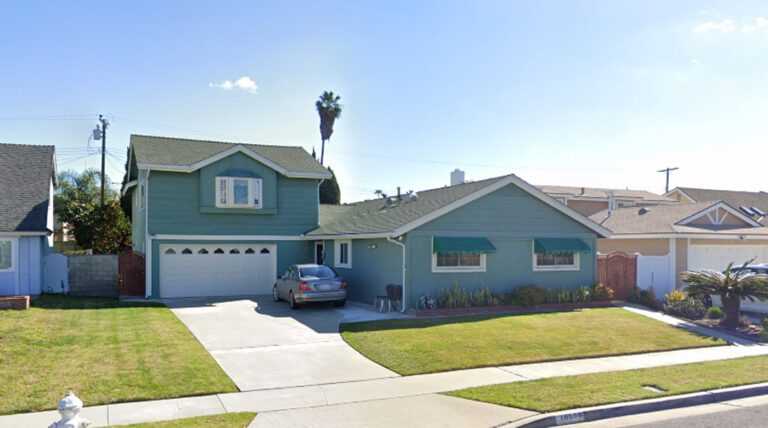
Choosing the right location for your gardenia plant is crucial for its growth and overall health. Gardenias thrive in warm climates, so it’s important to find a spot that offers plenty of sunlight but also provides some shade during the hottest part of the day.
Here are some tips for choosing the right location for your gardenia:
- Sunlight: Gardenias need at least six hours of direct sunlight every day. Look for a spot in your garden that gets full morning sun and partial afternoon shade.
- Temperature: Gardenias prefer moderate temperatures between 65 and 70 degrees Fahrenheit. Avoid planting them in areas that are prone to extreme temperature fluctuations or strong winds.
- Soil: Gardenias require well-draining, acidic soil with a pH between 5.0 and 6.0. Test the soil in your chosen location to ensure it meets these requirements. If the soil is not acidic enough, you can add organic matter or use a suitable soil amendment to adjust the pH.
- Protection: Look for a location that provides some protection from strong winds or harsh weather conditions. Gardenias are delicate plants and can be easily damaged by strong winds or heavy rain.
By carefully choosing the right location for your gardenia plant, you can ensure that it has the best possible conditions for growth and will reward you with beautiful blooms and a healthy appearance.
Providing Proper Sunlight
The gardenia plant requires proper sunlight to thrive and produce beautiful blooms. Here are some tips for providing the right amount of sunlight for your gardenia:
1. Choose the right location
Select a location for your gardenia plant that receives bright, indirect sunlight for about 4-6 hours a day. Avoid placing it in direct, intense sunlight as it can burn the leaves and flowers.
2. Morning sun is ideal
Gardenias prefer morning sun rather than afternoon sun. The gentle morning sunlight helps the plant to photosynthesize and promotes healthy growth. Avoid exposing gardenias to intense heat and direct sunlight during the afternoon.
3. Provide some shade
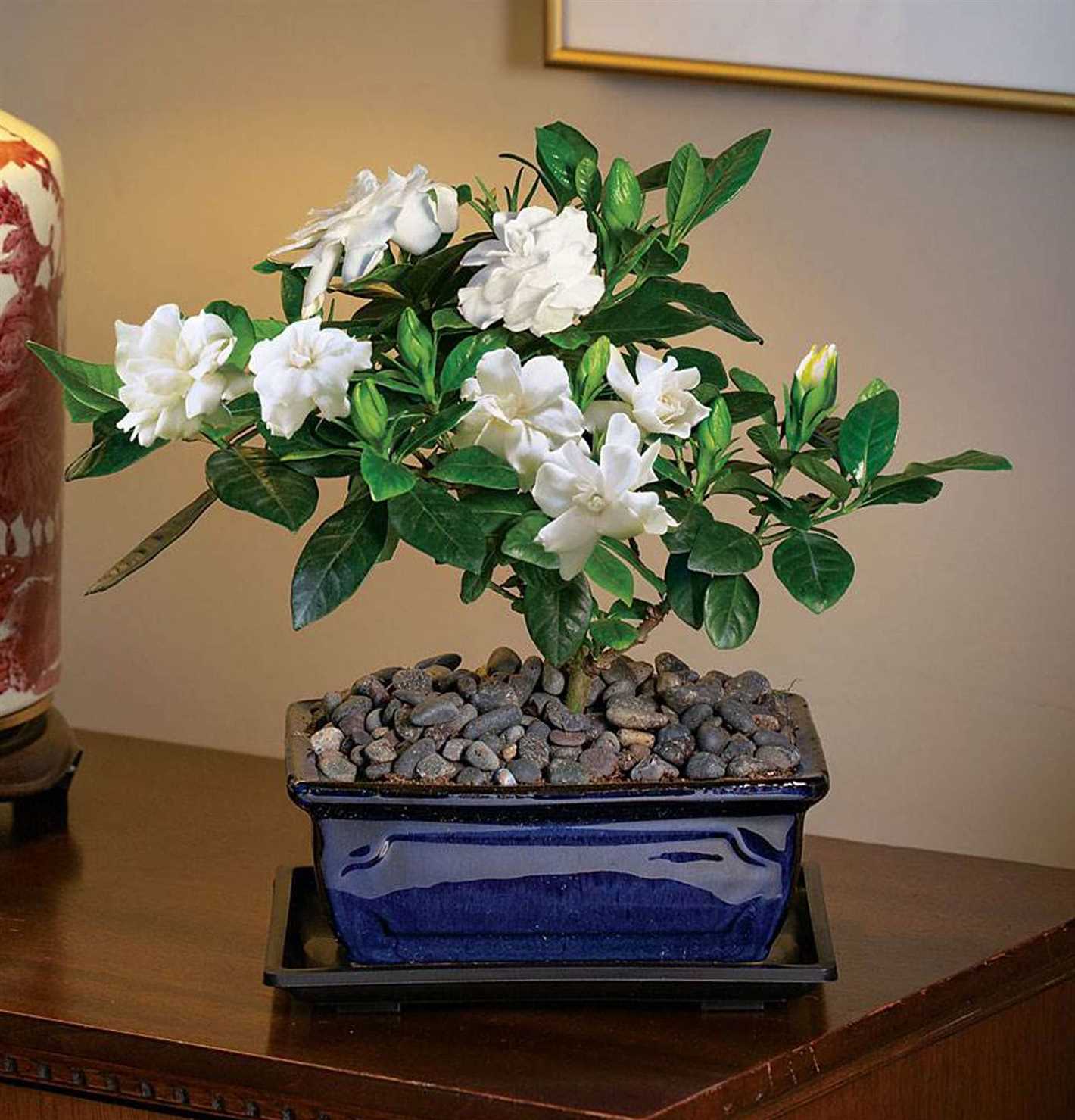
While gardenias require sunlight, they also need some shade to protect them from the intense heat. If your gardenia is exposed to too much direct sunlight, consider providing some shade during the hottest parts of the day, especially in hot climates.
4. Utilize curtains or blinds
If you have gardenias indoors, you can use curtains or blinds to filter the amount of sunlight they receive. This can help create a more suitable environment for the plants.
By following these tips and providing the proper amount of sunlight, your gardenia plant will thrive and reward you with beautiful and fragrant blossoms.
Watering the Gardenia
Proper watering is essential for the health and beauty of your gardenia plant. Here are some tips to help you water your gardenia effectively:
- Water regularly: Gardenias need consistent moisture, so make sure to water them regularly.
- Check the soil: Before watering, check the soil to see if it is dry. Stick your finger about an inch into the soil to test its moisture level.
- Use room temperature water: Avoid using cold or hot water, as extreme temperatures can shock the plant. Room temperature water is best for gardenias.
- Water at the base: Direct the water at the base of the plant, avoiding the leaves. This will help prevent diseases and minimize water loss through evaporation.
- Don’t overwater: While gardenias need moisture, they don’t like to sit in soggy soil. If the soil feels overly wet, reduce the frequency of watering.
Keep in mind that the watering needs of your gardenia may vary depending on factors such as the temperature, humidity, and the size of the pot. It’s important to monitor the plant and adjust your watering schedule accordingly.
By following these watering tips, you can help ensure that your gardenia plant thrives and maintains its beauty.
Fertilizing for Optimal Growth
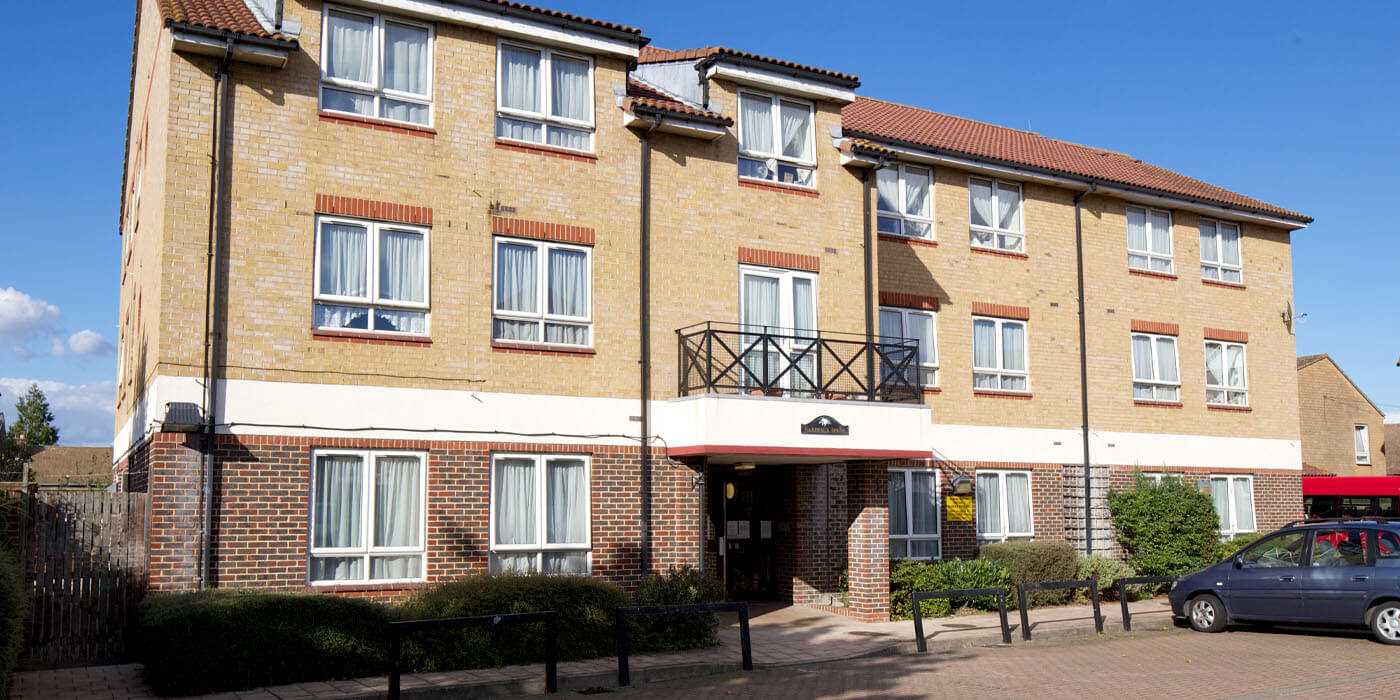
Fertilizing your gardenia plants is essential for promoting optimal growth and keeping your plants healthy. Here are some tips and tricks for fertilizing your gardenias:
1. Choose the right fertilizer
When it comes to fertilizing your gardenia plants, it’s important to choose the right fertilizer. Look for a fertilizer specifically formulated for acid-loving plants, as gardenias prefer acidic soil. This type of fertilizer will have a higher ratio of nitrogen (N) and lower ratios of phosphorus (P) and potassium (K).
It’s also important to choose a slow-release fertilizer, as gardenias don’t need frequent or heavy feeding. Slow-release fertilizers provide a steady supply of nutrients over time, preventing a buildup of excessive nutrients that can harm the plants.
2. Timing
The timing of fertilizing is crucial for the optimal growth of your gardenias. Start feeding your plants in early spring, just before new growth begins. This will give them a boost during the growing season. Avoid fertilizing in late fall or winter when the plants are dormant, as they won’t be able to use the nutrients effectively.
3. Application
Follow the instructions on the fertilizer packaging for application rates. Gardenias are sensitive to overfertilization, so it’s better to use less than the recommended amount. Apply the fertilizer evenly around the base of the plants, keeping it away from the stems and leaves. Water the plants after fertilizing to help the nutrients reach the roots.
4. Additional Tips
- Always water your gardenias before fertilizing to prevent root burn.
- Avoid foliar feeding (spraying fertilizer on the leaves) as gardenias can be sensitive to foliar applications.
- Monitor your plants for any signs of nutrient deficiencies or excesses. Yellowing leaves may indicate a lack of nitrogen, while brown leaf tips can be a sign of excessive fertilizer.
- Regularly check the pH level of your soil to ensure it stays within the optimal range for gardenias (around 5.0 to 6.0).
With the right fertilizer and proper timing, your gardenias will thrive and reward you with beautiful blooms and lush foliage.
Pruning and Shaping the Plant
Proper pruning and shaping of your gardenia plant is essential to maintain its health and beauty. Pruning helps to remove dead or damaged branches, encourages new growth, and helps maintain the desired shape of the plant.
When to Prune

The best time to prune your gardenia plant is in early spring, just before new growth begins. This allows the plant to recover and produce new growth during the growing season. However, if your gardenia has become overgrown or has dead branches, it can be pruned at any time of the year.
Tools Needed
To prune your gardenia plant, you will need a few basic tools:
- Sharp pruning shears or bypass pruners
- Garden gloves
- Disinfectant (such as rubbing alcohol or bleach)
Pruning Technique
Follow these steps to effectively prune and shape your gardenia plant:
- Start by disinfecting your pruning tools using rubbing alcohol or bleach. This helps prevent the spread of disease.
- Identify any dead or damaged branches and remove them. Make clean cuts just above a healthy bud or branch.
- Next, remove any weak or crossing branches. This helps improve airflow and prevents rubbing, which can lead to damage and disease.
- Thin out the interior of the plant by removing some of the older, crowded branches. This helps promote better air circulation and sunlight penetration.
- To shape your gardenia plant, prune the tips of the branches to encourage branching and create a fuller appearance. Trim back to just above a healthy bud or side shoot.
Avoid Over-Pruning
While it’s important to prune your gardenia plant, it’s also essential to avoid over-pruning. Removing too many branches can stress the plant and negatively impact its overall health and growth. A good rule of thumb is to never remove more than one-third of the plant’s total foliage at once.
| Benefit of Pruning | Reason |
|---|---|
| Promotes new growth | By removing old, dead, or weak branches, pruning stimulates the plant to produce new, healthy growth. |
| Improves airflow | Thinning out the interior of the plant increases airflow, reducing the risk of disease and promoting optimal health. |
| Maintains shape | Regular pruning helps to maintain the desired shape and size of the gardenia plant. |
Managing Pests and Diseases
Gardenias are beautiful plants, but they can be susceptible to pests and diseases. Here are some tips to help you manage common problems:
Pests
- Aphids: These small insects suck the sap from gardenia leaves, causing them to curl and distort. You can remove aphids by spraying the plants with a strong jet of water or using insecticidal soap.
- Mealybugs: Mealybugs are small, white, cottony insects that feed on the sap of gardenia leaves and stems. Use a cotton swab dipped in rubbing alcohol to remove them, or use an insecticidal soap.
- Whiteflies: Whiteflies are tiny, white insects that suck the sap from gardenia leaves, causing them to yellow and wilt. You can try using sticky traps or a vacuum cleaner to remove them, or use an insecticidal soap.
- Scale insects: Scale insects are small, circular bugs that attach themselves to gardenia leaves and stems. You can scrape them off with a sharp object or use an insecticidal soap.
Diseases
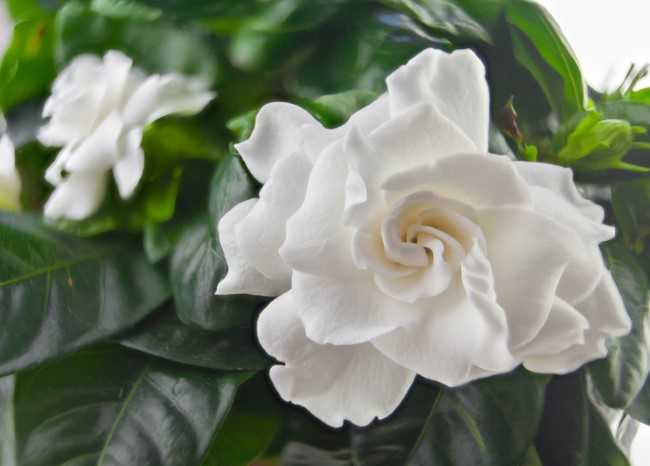
- Powdery mildew: Powdery mildew appears as a white, powdery coating on gardenia leaves. Improve air circulation around the plant by pruning, and avoid overhead watering. Fungicides can also be used to treat the disease.
- Root rot: Root rot is caused by overwatering and poorly drained soil. Make sure your gardenia is planted in well-draining soil, and water the plant only when the top inch of soil feels dry. To prevent root rot, avoid overwatering and remove any dead or decaying plant material.
- Leaf spot: Leaf spot is a common fungal disease that causes dark spots on gardenia leaves. Remove any infected leaves and improve air circulation to reduce humidity. Fungicides can be used to treat the disease.
Regularly inspect your gardenia plant for signs of pests or diseases, and take action as soon as you notice a problem. By following these tips, you can help keep your gardenia plant healthy and beautiful.
Winter Care for Gardenias
1. Protecting Gardenias from Frost
Gardenias are sensitive to cold temperatures and can be damaged by frost. To protect your gardenia plant during the winter months:
- Bring the gardenia indoors if you live in an area with harsh winter conditions.
- If you can’t bring the plant inside, cover it with a frost cloth or blanket during freezing temperatures.
- Place the gardenia in a protected area, such as near a wall or under a tree, to provide extra insulation.
2. Adjusting Watering Schedule
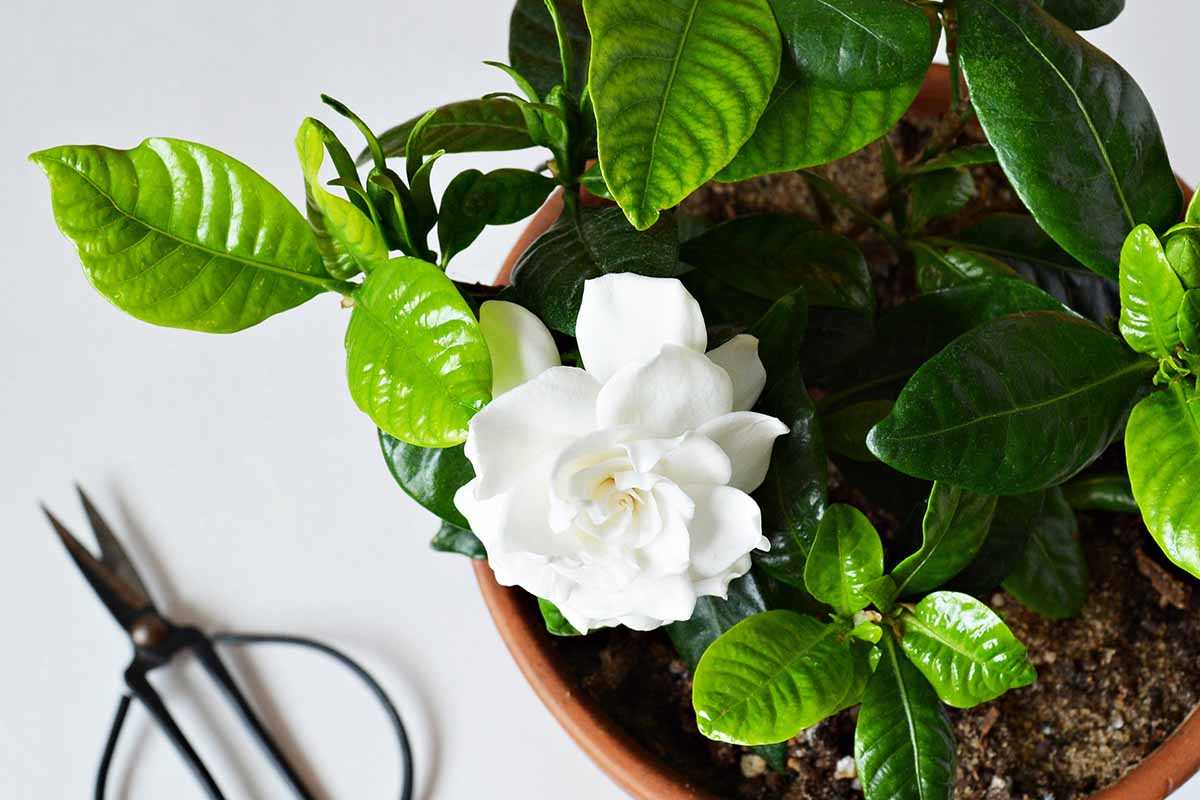
Gardenias require less water during the winter months since they are not actively growing. Follow these guidelines for watering:
- Water the gardenia deeply but less frequently to prevent waterlogged soil.
- Check the soil moisture level by sticking your finger about an inch into the soil. If it feels dry, water the plant.
- Avoid watering the foliage to prevent rot and fungal diseases.
3. Providing Adequate Light
Gardenias need bright, indirect light to thrive. During the winter, when natural light is often limited, take these steps to ensure your gardenia plant receives enough light:
- Place the gardenia near a window that receives sunlight for a significant part of the day.
- Consider using grow lights to supplement the natural light if necessary.
- Avoid placing the gardenia near drafts or cold windows that can cause temperature fluctuations.
4. Controlling Humidity
Gardenias prefer high humidity levels, but indoor environments can become dry during the winter. To maintain the humidity level:
- Place a tray filled with water near the gardenia plant.
- Mist the foliage of the gardenia with water regularly.
- Use a humidifier to increase the overall humidity in the room.
5. Pruning and Maintenance
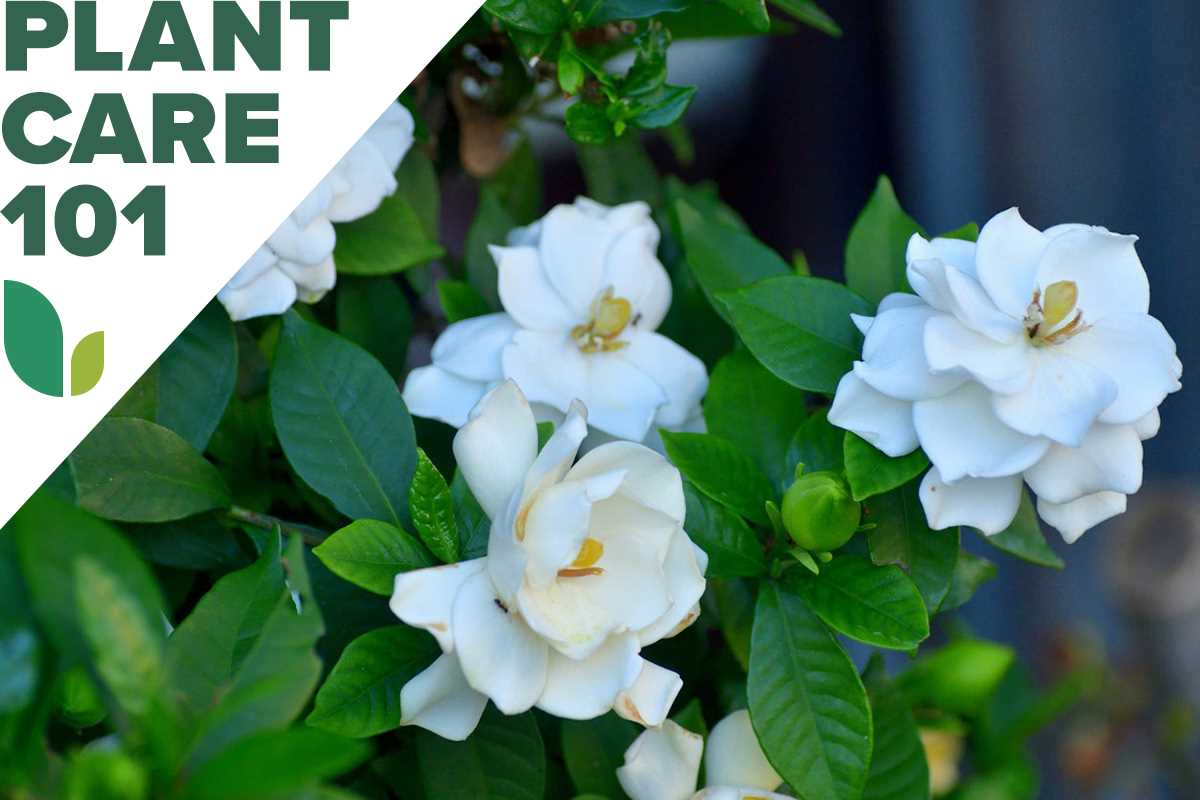
Winter is a good time to perform maintenance tasks on your gardenia plant:
- Remove any dead or yellowing leaves to promote healthy growth.
- Prune the gardenia to shape it and remove any overcrowded or crossing branches.
- Apply a slow-release fertilizer specifically formulated for acid-loving plants, following the package instructions.
| Task | Instructions |
|---|---|
| Protecting from Frost | Bring indoors or cover with frost cloth |
| Adjusting Watering Schedule | Water deeply but less frequently |
| Providing Adequate Light | Place near a sunny window or use grow lights |
| Controlling Humidity | Use water-filled tray, mist foliage, or use a humidifier |
| Pruning and Maintenance | Remove dead leaves, prune, and fertilize |
Troubleshooting Common Issues
Yellowing Leaves
If you notice that the leaves of your gardenia plant are turning yellow, it may be a sign of insufficient light or overwatering. Gardenias require bright but indirect light, so make sure to place your plant in a location that receives plenty of sunlight without direct exposure to the harsh rays. Overwatering can lead to root rot and, consequently, yellowing leaves. Ensure that the soil is well-draining and allow the top inch of soil to dry out before watering again.
Brown Spots on Leaves
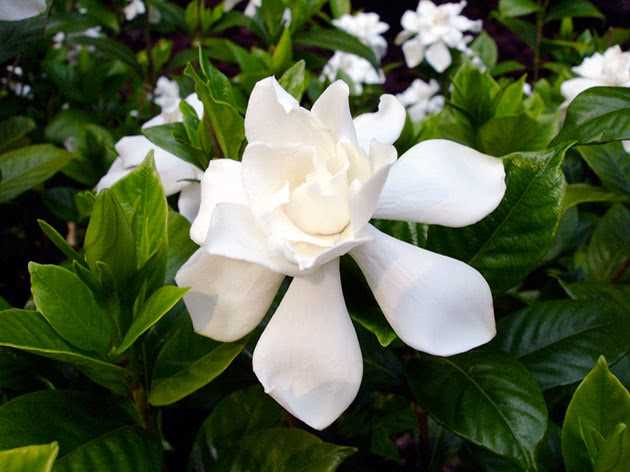
Brown spots on the leaves of your gardenia plant can indicate several issues, including fungal or bacterial diseases, pest infestation, or improper watering. Inspect the affected leaves closely to determine the cause of the problem. If you suspect a disease or pest infestation, consult a gardening expert for proper diagnosis and treatment. Adjusting your watering technique to avoid wetting the leaves can also help prevent the development of brown spots.
Lack of Blooms
If your gardenia plant is not producing any blooms, it may be due to insufficient light, improper fertilization, or incorrect temperature. Gardenias require at least six hours of bright, indirect sunlight each day to bloom. Ensure that your plant is receiving enough light and consider using a balanced fertilizer specifically formulated for gardenias to promote blooming. Additionally, gardenias prefer temperatures between 65-70°F (18-21°C) during the day and slightly cooler temperatures at night.
Wilting or Drooping Leaves
Wilting or drooping leaves on a gardenia plant can be a sign of underwatering, root rot, or pest infestation. Check the moisture level in the soil by sticking your finger about an inch deep into the soil. If it feels dry, you may need to water your plant more frequently. However, be careful not to overwater, as this can lead to root rot. Inspect the roots for any signs of decay and treat accordingly. If you suspect a pest infestation, look for visible signs of pests and consult a gardening expert for proper treatment.
Sticky Residue on Leaves
If you notice a sticky residue on the leaves of your gardenia plant, it is likely caused by an infestation of aphids or scale insects. These pests feed on the sap of the plant, excreting a sugary substance called honeydew. The honeydew attracts ants and can promote the growth of black sooty mold. To control the infestation, you can try spraying a mixture of water and mild liquid soap onto the affected leaves. Alternatively, consult a gardening expert for recommendations on specific insecticides that are safe to use on gardenias.
Q&A:
How often should I water my gardenia plant?
Water your gardenia plant once or twice a week, making sure the soil is moist but not waterlogged.
What kind of sunlight does a gardenia plant need?
Gardenia plants need bright indirect light, so place them in a location with partial shade or filtered sunlight.
What is the ideal temperature for a gardenia plant?
Gardenia plants prefer temperatures between 65-75°F (18-24°C). Avoid exposing them to extreme heat or cold.
How can I prevent pests from attacking my gardenia plant?
To prevent pests, regularly inspect your gardenia plant for signs of infestation, and use organic insecticidal soap or neem oil to control them if necessary.
Why are the leaves of my gardenia plant turning yellow?
Yellow leaves on a gardenia plant can be caused by various factors, such as overwatering, underwatering, nutrient deficiency, or pest infestation. It’s important to evaluate the plant’s watering and fertilizing routine to determine the cause and take appropriate action.
Video:
Growing and Caring for Gardenias in Pots or Indoors: Tips and Tricks







